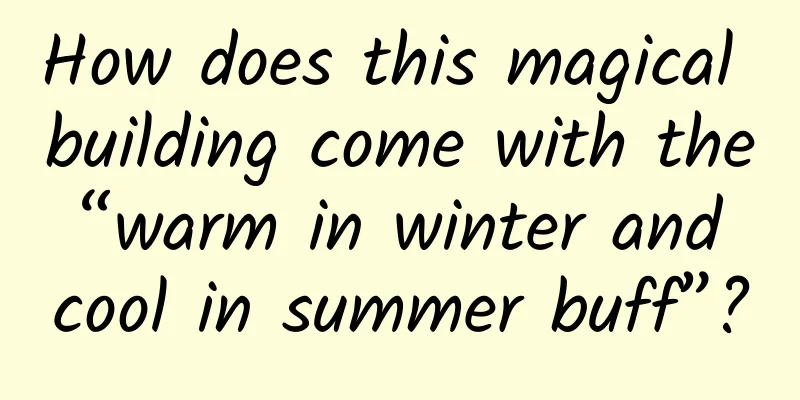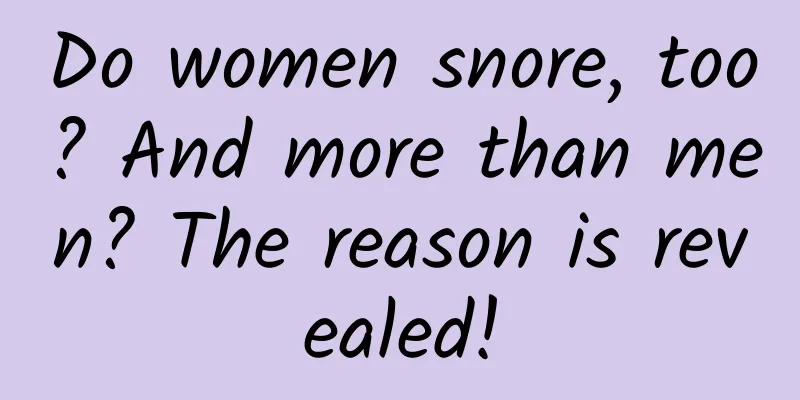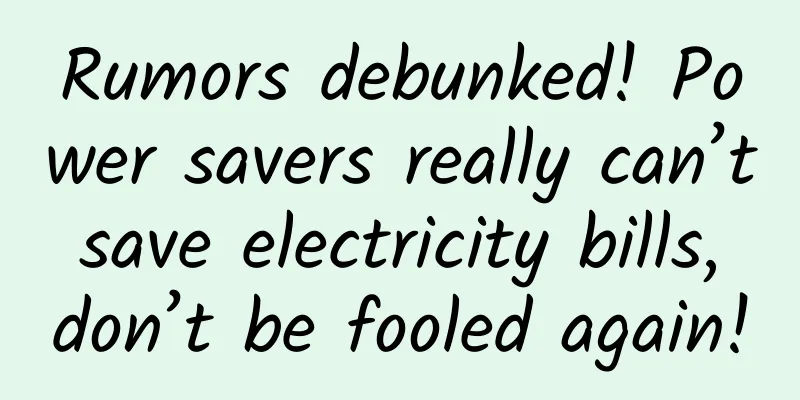How does this magical building come with the “warm in winter and cool in summer buff”?

|
There is a kind of building that can be warm in winter and cool in summer without air conditioning or heating. Doesn’t it sound amazing? This type of house that comes with a built-in "warmth in winter and coolness in summer buff" is called a passive building. Compared with ordinary buildings, it is greener and low-carbon. 1. The Secret of Warm Winter and Cool Summer Passive buildings are not Hal's movable "castle", but a new type of low-carbon energy-saving building. Without relying on traditional energy, they can fully or partially meet the needs of indoor heating, cooling and lighting, and achieve environmental indicators such as constant temperature, constant humidity and constant oxygen in the building. If the traditional "active" building is compared to a "glass bottle", maintaining a constant temperature inside requires active heating or cooling, and this process consumes energy. Then, a passive building is like a "thermos bottle", which can maintain a constant temperature inside regardless of whether it is hot in summer or cold in winter. Why are passive buildings so amazing? First, the no-thermal-bridge design concept enables the passive building envelope to overcome the "weakness" of large heat loss in ordinary buildings. The envelope structure has good thermal insulation and airtightness. With the use of new thermal insulation materials, high-performance thermal insulation walls, high-performance multi-layer energy-saving glass and other measures, passive buildings are like wearing a thick, well-sealed cotton coat, which greatly reduces the heat transfer coefficient. Second, by adopting passive technologies such as natural ventilation and lighting, and making full use of renewable energy, buildings have gotten rid of their dependence on traditional fossil energy. Third, the efficient heat recovery fresh air system continuously delivers fresh air to the room, which improves energy utilization while ensuring indoor air quality. Figure 1 Passive building "black technology" 2. The Origin and Development of “Passive House” Passive building technology has a long history. For example, cave dwellings with thick walls and roofs have good thermal insulation and are warm in winter and cool in summer. The concept of "Passive House" was established on the basis of Germany's low-energy building concept in the 1980s. It was proposed by researchers from the Passive House Institute (PHI) in Germany and Lund University in Sweden. Its characteristic is that it can maintain a comfortable indoor thermal environment without active heating and air-conditioning systems. In 1991, the first "Passive House" was built in Darmstadt, Germany. Other countries have also successively introduced local passive building technology standards and launched "Passive House" construction projects. The first building in my country to be certified as a "passive house" is the "Hamburger House" at the 2010 Shanghai World Expo. The "Hamburger House" has a construction area of 3,150 square meters and is about 18 meters high. Its appearance looks like four red "drawers" that are opened and combined together. The building's facade uses high-insulation and sound-proof building materials with strong sealing properties. The roof is equipped with about 450 square meters of photovoltaic power generation equipment. It uses a fresh air system with cooling, dehumidification, and heat recovery functions, and uses a ground-source heat pump system for cooling and heating. The application of a series of new energy-saving materials, new technologies, and new equipment has made it almost unnecessary for the building to actively supply energy, but it can make people inside feel like spring all year round. Figure 2: Exterior of the “Hamburg House” building "Passive House" exhibits in the Science and Technology Museum With the promotion of passive buildings and new technologies, related popular science exhibits and exhibitions are gradually emerging. For example, the "Green House" exhibit in the Challenge and Future Exhibition Hall on the 4th floor of the China Science and Technology Museum is a "passive house". Visitors can not only see the internal structure and energy-saving technology of this ultra-low energy-consuming house, but also personally design houses with different energy consumption through the "Build Energy-Saving House Game". After selecting walls, roofs, windows, floors, lighting systems, and air circulation systems with different energy-saving effects, the system will automatically generate the house designed by the visitor and determine whether the house is energy-saving or non-energy-saving. Figure 3 “Green House” exhibits 4. Future “Low-Carbon Buildings” The essence of the sustainable development of buildings is an energy problem, which is directly reflected in the comfortable, healthy and efficient thermal environment of buildings. Passive building technology has explored new directions for the future development of the construction field, taking into account both low-carbon energy saving and optimizing the quality of the indoor environment. The development of passive ultra-low energy consumption buildings is an important direction for future building energy conservation and carbon reduction, and is also an important way to promote regional energy transformation and promote carbon peak and carbon neutrality. Of course, since the "passive house" building and related standards are introduced from abroad, its development in my country must take into account the local economic development level and construction cost, building and material technology, climate characteristics, people's living habits, indoor environmental standards, etc. For example, the differences in different climate zones make it difficult to implement unified passive building energy consumption indicators. Research on how to use the "passive house" technical principles, carry out localized building design, explore practice and innovative upgrades according to local conditions is of great significance to the development of passive buildings in my country. Author: Wang Wenyuan, Assistant Researcher, China Science and Technology Museum Review expert: Wang Yi, Beijing Institute of Architectural Design Co., Ltd., senior engineer |
>>: "Non-fried", "0 additives", "0 sucrose", how many health traps in snacks have you fallen into?
Recommend
New media operation: build operational thinking!
New media operation is a process of "raising...
When skiing, why is there snow only on the ski slopes and the mountains are bare?
Have you skied this winter? In the past two years...
81% screen-to-body ratio: Sharp AQUOS Phone hands-on
For fans of Japanese mobile phones, the AQUOS Phon...
Wei Ya’s 4 core secrets of selling goods through live streaming!
Selling goods through live streaming is not that ...
How does "Meipian", which has 80 million users, conduct content operations?
Meipian's slogan is to record the beauty and ...
How to conduct APP competitor research? All the methods, tools and templates you want are here!
Purpose of competitive product research: Competit...
How much does it cost to develop a Hefei fabric mini program?
How much is the quotation for Hefei fabric develo...
Who are the people who support GMOs and who are against them? Are GMOs good or bad?
This article is based on answering similar questi...
Luohe SEO training: Internet promotion company analyzes the impact of website traffic ranking on SEO
Rather than saying that SEO personnel expect keyw...
How to get the “traffic key” of the Winter Olympics hot spots?
During the past Spring Festival holiday, Video Ac...
Popular Science | How come there are different colored corn kernels on the cob?
Have you noticed that most corn cobs sold in the ...
A frontline developer's thoughts on App architecture and componentization
Preface Regarding App architecture and componenti...
Consumers please note: AI TVs are still stupid, they just have upgraded voice interaction
It seems that as the market weakens, the creativi...
China Passenger Car Association: Global sales of new energy vehicles will reach 14.28 million in 2023, with China accounting for 63.5%
In 2023, China's new energy passenger cars ac...
Guan Bin's new credit card gameplay in 2021
Course Catalog 1. The epidemic meets the new vers...









